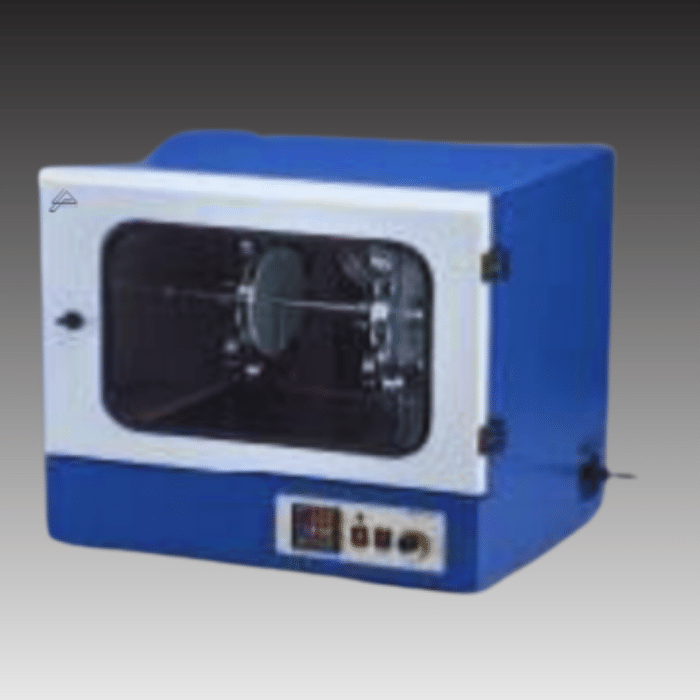A hybridization oven is a laboratory instrument commonly used in molecular biology and genetics research. Scientists primarily use it for hybridization procedures, including DNA or RNA hybridization, Southern blotting, and in situ hybridization.
features of hybridization oven
- Construction: The oven is made of heavy gauge MS (mild steel) with a powder-coated body. This construction material provides durability and strength to the oven.
- Temperature Control: The oven can maintain temperatures from above ambient (room temperature) to 60℃. The accuracy of temperature control is ±5℃, meaning the temperature can vary by up to 5 degrees Celsius from the set point.
- Centrifugal Blower: A powerful centrifugal blower ensures proper air circulation and temperature distribution in the hybridization oven.
- DC Motor: The oven utilizes a DC motor for its operation. The motor’s accuracy allows precise control over the speed of the centrifugal blower. Additionally, The DC motor helps reduce noise levels.
- Speed Control: You can adjust the oven’s speed within a range of 10 rpm to 60 rpm. The accuracy of the speed control is 2 rpm, meaning the speed can vary by up to 2 revolutions per minute from the set point.
- Front Door: The acrylic front door of the oven offers visibility, insulation, and a locking system for secure operation.
- Capacity: The Anachem lab oven has a capacity of 44 liters, indicating the maximum volume of the chamber available for accommodating samples.
- Power Supply: The oven operates on 220 volts of alternating current (A.C.) with a frequency of 50Hz, which is the standard electrical supply in many regions.
- Weight: The total weight of the oven is 12 kilograms (kgs), indicating its portability and ease of handling.
Technical Specification |
|
| Cat no. | 116729 |
| Temperature controller | Digital |
| RPM Indicator | Analogue |
| Size | 406 X360X360mm |







